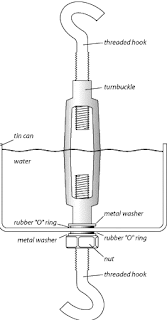Fibre Arts have been a love of mine for many years. Now it is time to share some of this love with the next generation. Finger Knitting is a wonderful introduction to the world of knitting and is perfect for little hands.
My daughter asked if I could teach her how to knit so we started off with this. Next step will be some corking and then onto knitting.
We have used a variety of yarn, both synthetic and wool. This is a great project to to use up all the leftover yarn you have from previous knitting adventures.
This photo shows an example of finger knitting done with various yarn weights.
From left to right~ 1. Worsted [4] 2. Chunky-acrylic[5]
3. Chunky- wool [5] 4. Roving or Bulky- wool [6]
It is best to start off with a chunky{5} or bulky{6} yarn as it is easier to work with.
This yarn is a bulky yarn but it has some texture to it. It makes for an interesting result but is harder to work with so should be tried only after you have the basic technique down pat.
Some people have said the best way to save your work for later is to put it on a pencil but we like using a pen with a clip better as you can secure the loops.
Instructions
Whole Hand
***
Single Finger
***
Various Videos
***
In no time at all you will be left with many, many multicoloured snakes. : )
Once every member of your family, pets included, have a scarf for every day of the week, you can turn to some of these great project ideas.
Projects
***
HAPPY KNITTING!!!!!

















































